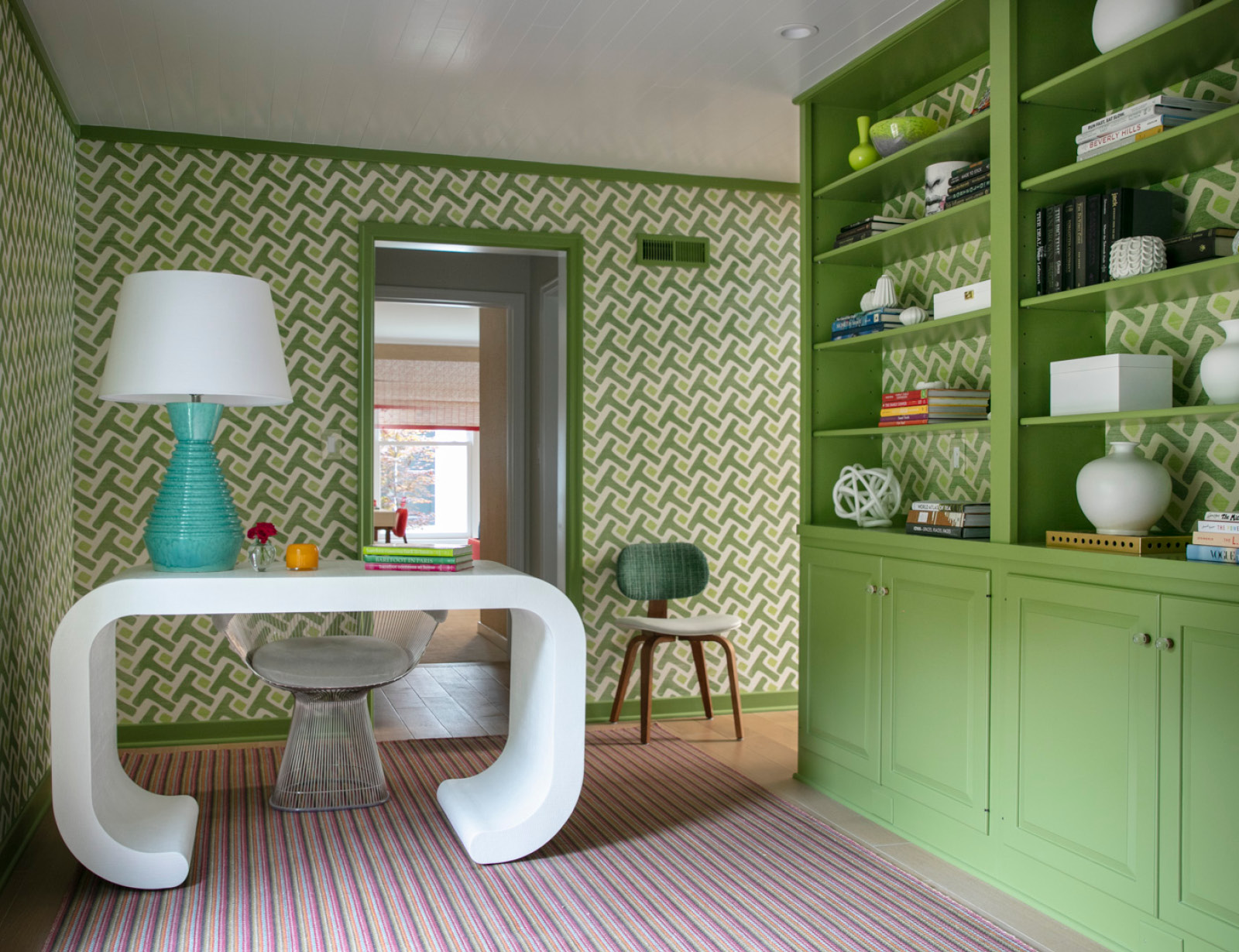
Bookcases at home are integral to how we live. Bookcase styling options are as varied as your needs and imagination. Bookshelves can be styled as charming children’s room nooks stacked with delightful favorites, like Winnie The Pooh and The Lion the Witch and the Wardrobe. Or they can be elegant architectural elements flanking windows in a study or living room.
As with most of us, my relationship with bookcases started long before I can remember. Books are a part of our world, and we can house them in many ways. I remember lining up books by size and color on the small set of shelves in my dorm room. I mixed in framed family photos and boxes to make the overall look aesthetically pleasing. Little did I know that I was priming myself for a lifetime of shelf styling.
As a designer, my engagement with bookcases and built-ins has evolved. I began to intentionally style bookshelves to incorporate books, beloved collections, and objects that create depth and visual interest. Clients typically hire me to design the bigger picture: kitchens, bathrooms, furniture arrangements, lighting plans, and artwork selection. But I love to create style in bookcases.
The intention of built-ins may be to house literary collections, but the surfaces can offer so much more. Whether the shelves are built in, freestanding, or even open étagères, there are ways to make them visually appealing and still accommodate a collection of books.

To create a well-balanced and dynamic bookcase, I always begin by removing everything. Then, I lay it all out so I can see it. First, books go back into the shelves by scale and color, leaving plenty of breathing room around them. Then I get creative.
Here’s my shelf styling method with eight easy bookcase styling tips to inspire you to create beautiful bookcases of your own.
- Highlight the form. Just because built-ins are functional doesn’t mean that you ignore the design factor. White built-ins work fine, but I often choose to splash them with color. An unapologetic bold hue will highlight the bookcase’s architecture and create a dominant feature the same way that an accent wall does. In this case, grass green tipped the built-ins to the outdoors with a fresh quality that serves as a neutral base for other pops of color.
- Add decorative interest. I particularly love and use the design trick of applying pattern to the back of a built-in. The same idea works for a freestanding bookcase. It can be an easy way to make a simple, inexpensive piece sing with flair. Here, I papered the back of the built-ins with the same pattern that I used to cover the walls. But use your imagination. If you’ve selected a large-scale pattern for the walls, consider a contrasting solid color or a pattern of a smaller scale to line the built-ins. Regardless, a different color on the back of the unit will put an exclamation point on the room’s vision.
- Consider color. There are two camps of book lovers. Some people like to group books by the color of the spines, and others prefer placement by category (novels, nonfiction, design books, etc). Pick one way and stick to it. There is no right or wrong. For this client’s built-ins, I divided books into one group with all-black spines and another that mixed all other colors.
- Aim for variety. Books should rest both vertically and horizontally. Line up books vertically if you want to put the spotlight on certain titles. Stacked horizontally, a few books provide an elevated platform for your favorite objects. Make sure you leave plenty of room between each stack so the books don’t feel stuffed in.
- Accessorize. Think of a built-in or bookcase like a basic sheath dress. On its own, it’s merely a foundation. Accessorized, it becomes aesthetically charming with multiple points of interest. Once you’ve placed your books, add the extras. Small collections should be grouped, like the trio of sculptural white vases that I placed on the second shelf for easy access when the client wants to fill them with fresh flowers. If you place a large bowl in one area of the unit, balance it by placing something of a similar size and weight in another area.
- Make more storage. Decorative boxes are stylish and functional. Placed on shelves in easy-to-reach spots, decorative boxes can be the perfect spot to store stamps, stationery, cords, chargers, and other small items.
- Leave breathing room. One mistake that I see often is the need to fill every little spot on a surface. Allow your favorite books and objects their own time to shine by not packing shelves so full. Plus, you’ll want to save space for the new treasures that you pick up.
- Rethink and redo. When it comes to styling a bookcase or built-in, remember that unlike upholstering a sofa in a new fabric, installing flooring, or choosing a countertop for a kitchen update, this decorative exercise is not permanent. If you don’t like the way it looks, no problem. Remove everything and start over. If something is not working, scour other rooms in your house for a piece that will be more successful. The best part about this decorative task: It’s free.


